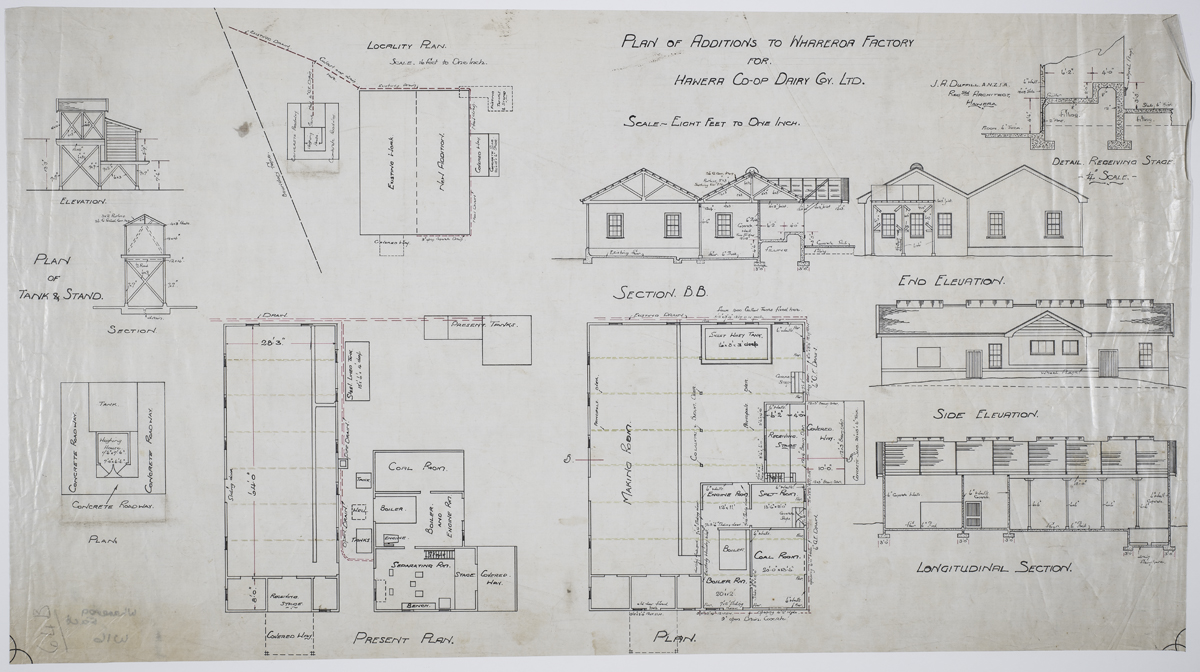
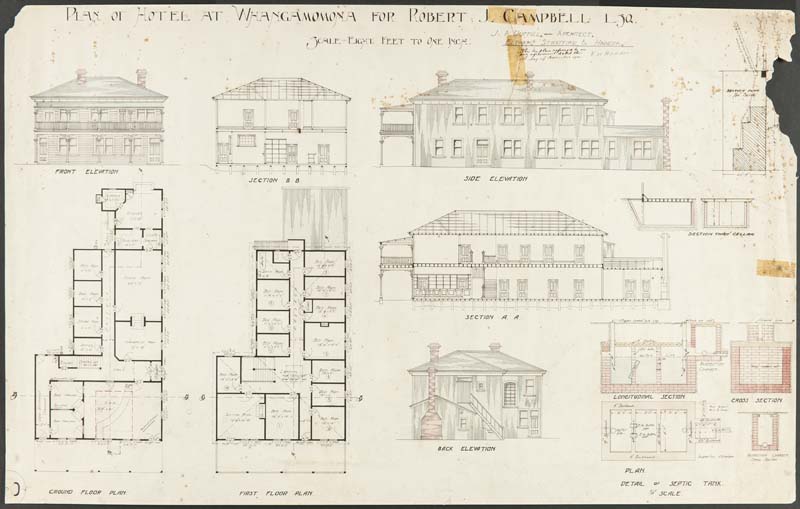
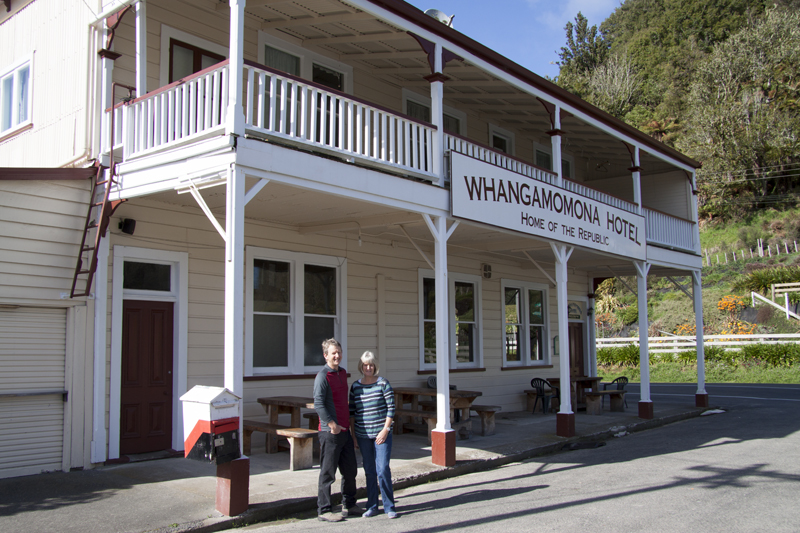
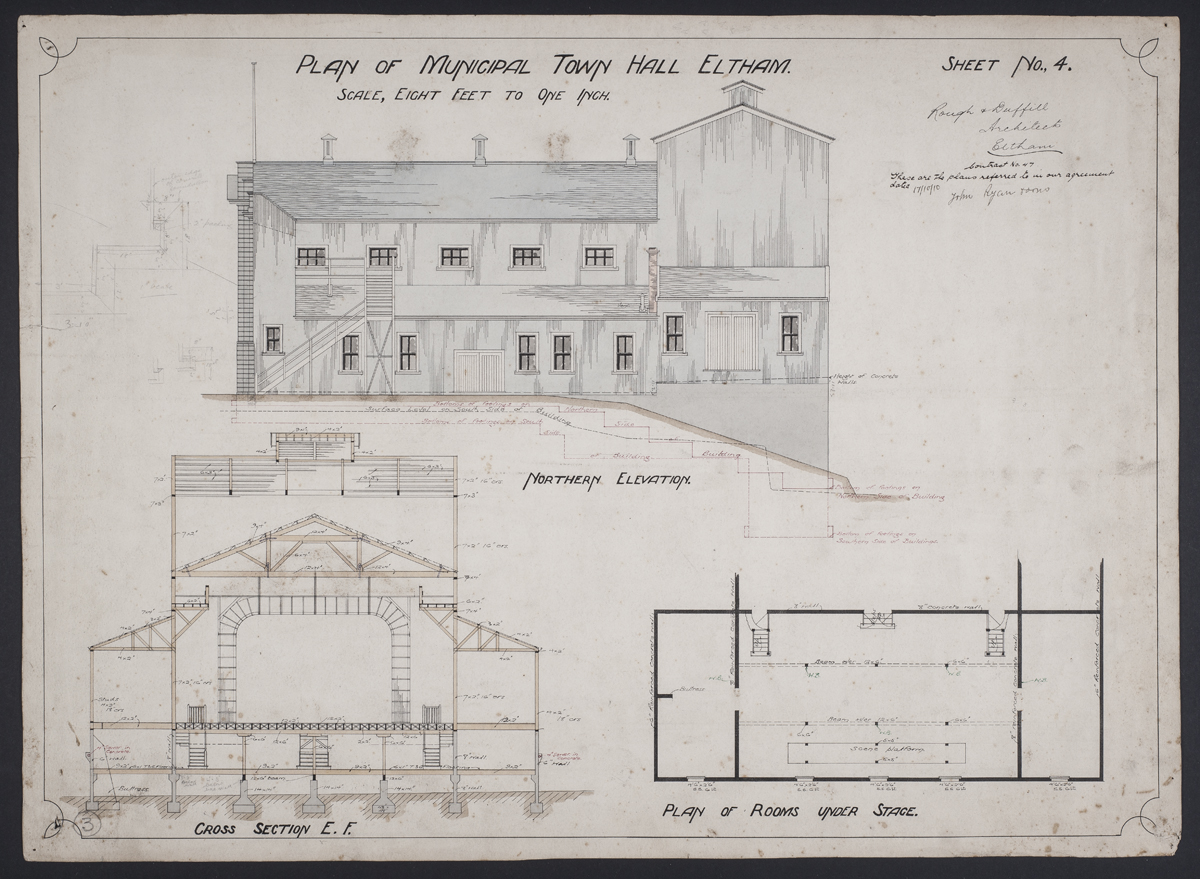
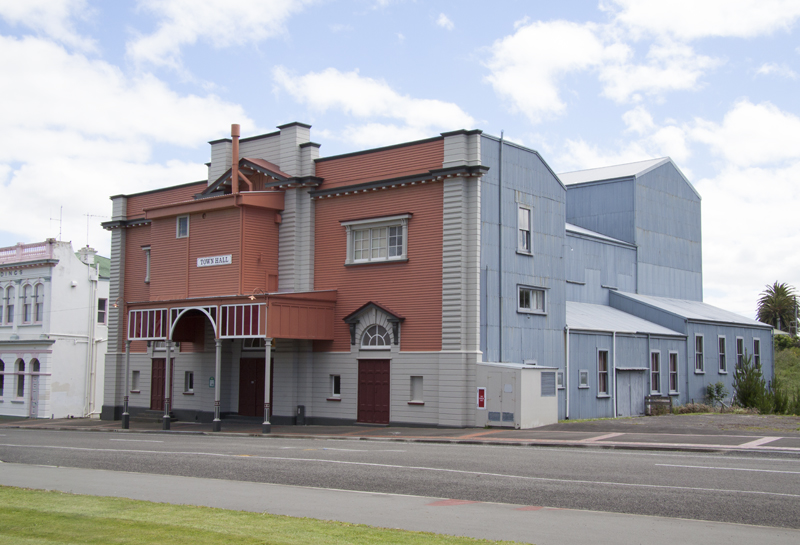
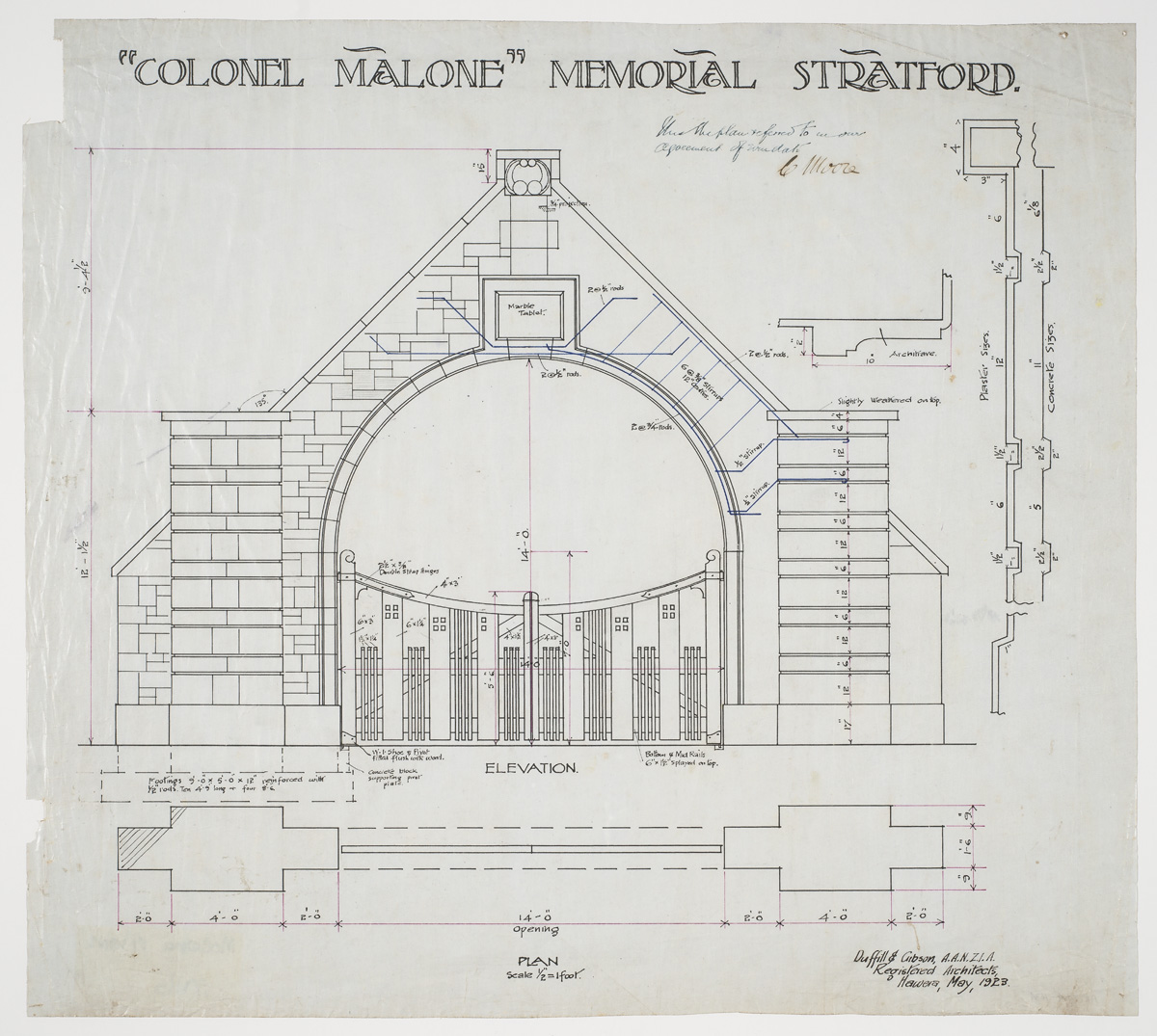
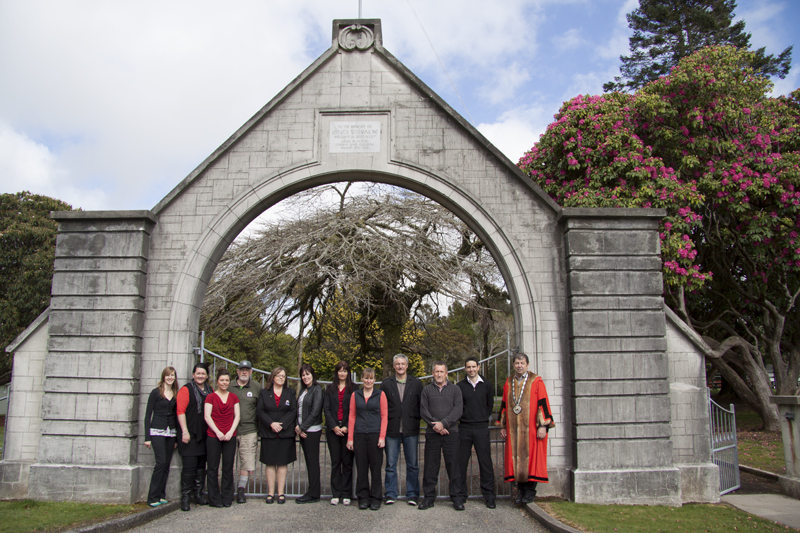
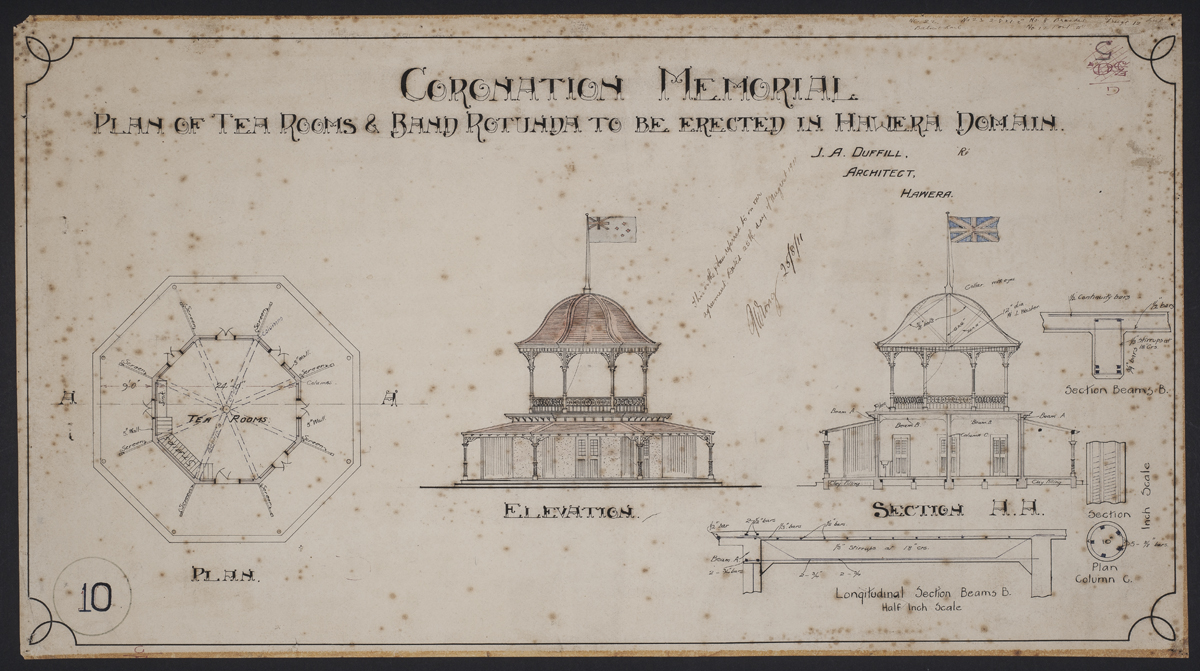
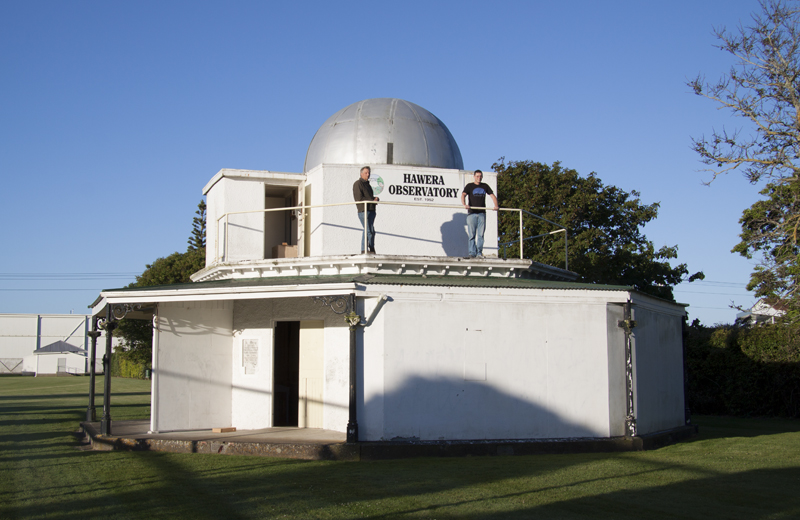
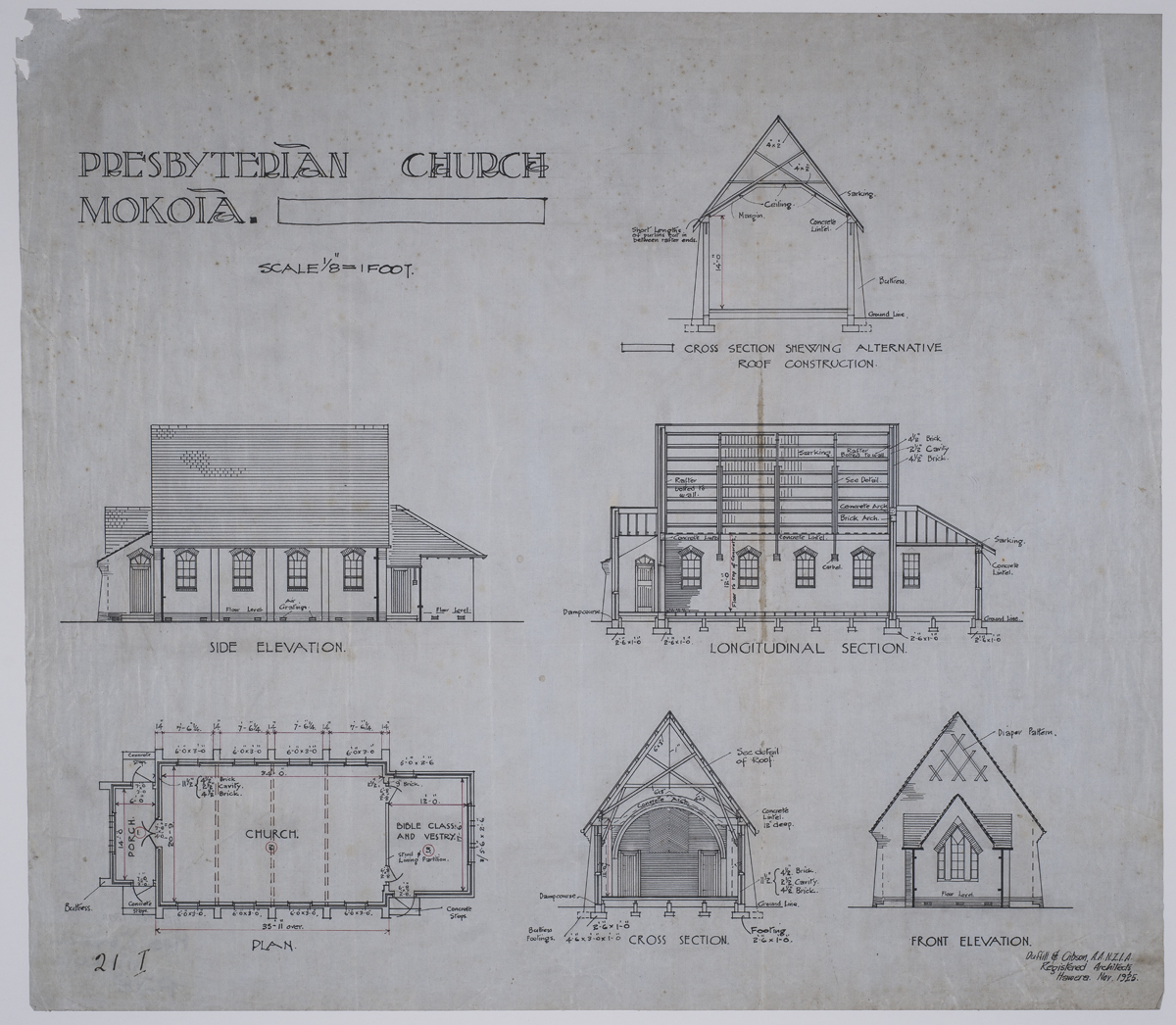
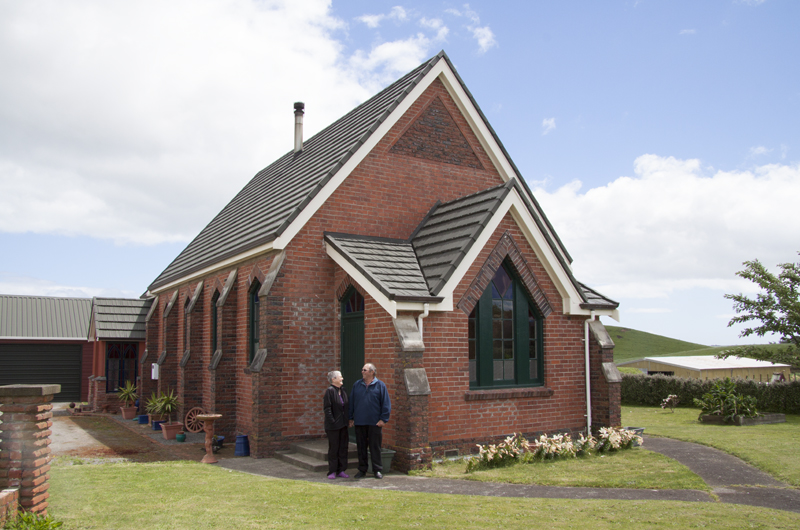
Safe in the Puke Ariki archives, lie many of the plans Jack Duffill drew up on his own or with his partners. Thin and silent metal drawers slide open to reveal drawings for 440 different buildings - 43 dairy factories, 220 houses and numerous commercial buildings, as well as many of our region's hospitals. It's a collection Puke Ariki is very proud of. More than 1700 individual plans tell of a long and illustrious architectural career that spanned 35 years.
“I think of him as being an important provincial architect, how's that for a label” says Hāwera writer and historian, Arthur Fryer. Fryer writes historical pieces for the Hāwera Star and there's not much about south Taranaki that he doesn't know. “Jack Duffill was a man of his time” he says.
Duffill grew up in Hāwera, where he was born in 1883. Though he came from a farming background, he trained as an architect when the family relocated to Wellington. At technical college, he found a way to pay his fees by teaching, staying just three papers ahead of his students.
After setting up practice in Eltham in 1905, he met Joyce Wilson on the tennis court and it was love, set and match. They were married in 1912, but the couple left immediately for Hāwera without a honeymoon. Duffill had been offered a partnership with architect J.W. Rough and took to the road in his motorcycle with his bride strapped into the sidecar beside him. “Today, you'd describe him as a man's man” Fryer says.
The Rough and Duffill partnership turned out to be a very good career move and when Rough returned to Invercargill in 1911, Duffill took over the business. Steven Gibson joined in 1918, and a new partnership of Duffill & Gibson was formed.
Hāwera architect Clive Cullen of Clive Cullen Architects says Duffill was a talented man in the right place at the right time. “It's not dissimilar to Frank Lloyd Wright in Chicago” he says. “Wright was the most famous American architect ever - the one who invented the prairie style house, the big low-hipped roofed houses with overhanging eaves, the ranch style house. All handcrafted and individually designed and absolute art works in themselves.
“He was in Chicago at the time when the meat industry was just booming in America, absolutely helter-skelter development, in the same way Duffill and Gibson would have been in South Taranaki at the time when the dairy industry was just flying along.”
Both Cullen and Fryer see Duffill's ground-breaking dairy factory designs as his greatest contribution to modern architecture. Fryer says it was a major architectural contribution, with more than 100 Duffill factories built in the Taranaki area, as well as those in Nelson, Hamilton, Wellington and Auckland.
Cullen believes Duffill & Gibson did an amazing thing when they rebuilt virtually all the first generation dairy factories in the province. “That first generation, they were all utilitarian concrete buildings but they were all purpose-made. They used, at the time they were done, pretty smart technology in terms of the use of concrete and a very efficient way of putting buildings together for industrial purposes.”
He thinks doing so many of them helped Duffill & Gibson to work out the best design, and each one would have effectively become a prototype for the next. “They would have got better and better as they went on, dare I say it, to the extent of probably using the same drawings over and over again at times, so they probably made a fair bit of money from it. The other things that they did, of course, were a lot of civic buildings, commercial buildings and houses. Those houses are still good today.”
Fryer acknowledges that Duffill's strength was his penchant for concrete, something he points out wasn't being used at the time. “He was keen on stressed concrete. We are not very far away from the Grafton Bridge in Auckland, and that was an 'early' concrete work in New Zealand. This is pre-World War One and here's Duffill down here using concrete for dairy factories.”
Many of the original wooden factories, made over a 20 year period till around 1890, were at the end of their limited lifetime, shrinking beneath the pressure of an ever expanding dairy industry. Puke Ariki holds the plans for 43 Duffill replacements.
A very early Duffill design can be seen in the Hāwera band rotunda in King Edward Park and interest lies in its two storey construction. “It had a cafeteria on the bottom level but on the top level, the band played” Fryer explains. “I haven't been able to talk to anyone who actually remembers the band playing there. A friend said he thought it would have been almost impossible to keep the music on the stands. It was a great idea but it just didn't work, so eventually, people got all keen about astronomy and built an observatory there.”
These days the band rotunda sports a shiny domed top and telescope but the flagstone bearing John Duffill's name still exists below.
A very well-known Duffill & Gibson design is the looming Remembrance Arch on Princess Street in Hāwera. Built in stone and concrete, it was to be used as an entrance to new Borough Council Chambers but plans were put aside by a council strapped for cash.
Later, it was hoped to provide access to a proposed theatre, but that too fell through. “There was a bunch of Philistines who wanted to use the space as a parking lot and have the entrance through the arch' Fryer says. “Fortunately they weren't heard!”
The Patterson building on High Street, is perhaps one of Duffill's greatest works and shows a marked flamboyance. An art deco exterior does little to reveal the beautiful layout inside, where a wide and stunning staircase draws visitors up to the second floor. Originally Wilkinson's, where imported china was displayed on shelves before large wall-mounted mirrors, it was known as Hāwera's 'posh shop' and people came from everywhere to admire it.
One of the most curious projects Duffill was involved was overseeing the construction of the Pātea Library in 1930, from plans drawn up by an award-winning architect who designed the Georgian revival styled library in Remuera.
The little Pātea Library is an extraordinarily handsome building, a smaller version of the one in Auckland. Built with money donated by a reclusive bachelor sheep farmer, it housed the Plunket Rooms and an adjoining flat, with a little L-shaped space for books. This year it will get the refurbishment it deserves.
The Hāwera Water Tower, renovated in 2004, was another project where Duffill was called in as consultant. Though he was not involved in construction, his expert opinion was sought when the tower was discovered to lean. As Fryer says, “There were not many people working in concrete who were sure of what they were doing. When the water tower was put up, it was designed on structural principles that were more attuned to working in wood. Duffill was on the very edge of things, he was working in concrete, a virtually new material.” Though it still leans slightly today, the tower was straightened at night, leaving many people unaware it had been 'fixed'.
John Alfred Duffill was not simply a local boy made good, but a local boy who created sound original structures that have stood the test of time. He pioneered a completely new concept, that of building in permanent materials and his concrete buildings are forerunners to those being built today. Duffill's work marked a whole new trend in thinking, design and construction and his safely-kept drawings will long remain a testimony to his remarkable talent and skill.
Please do not reproduce these images without permission from Puke Ariki.
Contact us for more information or you can order images online here.